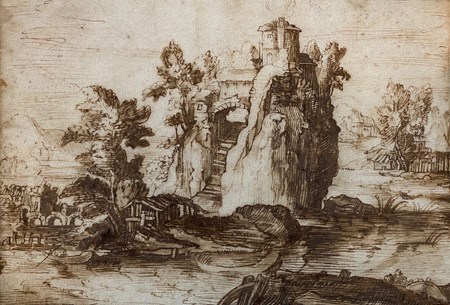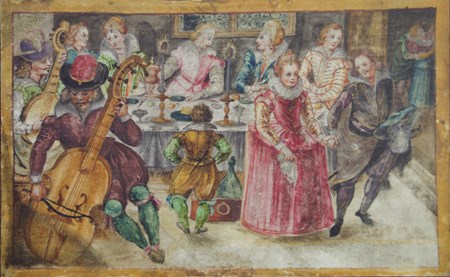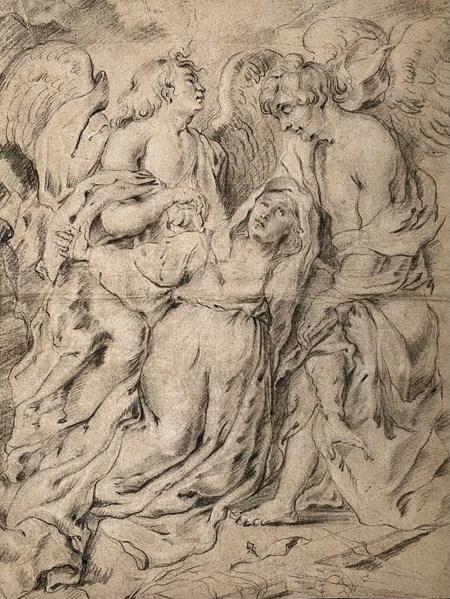Cornelis Schut
( 1597 - 1655 )
An Allegory (The Liberal arts under attack ?)
The drawing is part of a series of six that were bought together and come from a private collection in South France. Although different in style and techniques, they all have been kept together for several generations.
This sheet is perhaps the most spectacular in our series: using only red and black chalk and a distinct, almost expressive drawing style, Schut designed an intricate and very much alive composition in broadside. The subject is probably allegorical: protecting all kinds of music instruments, muses (note talso he mirror held over their heads) try to protect earthly wealth from an attack by a centaur and a satyr wearing a torch.
Schut made a few more similar allegorical and mythological drawings with similar dimensions (usually in black chalk). Some of them were converted into engraving.
There are some ambiguities about Schut's early career: it is likely that the young painter was apprenticed to Rubens, and Hendrick Van Balen and Jan Brueghel I are also mentioned as possible teachers. What is certain is that he is listed as a member of the Antwerp Guild of St Luke in 1618.
In 1623-24, Cornelis Schut travelled to Italy. In addition to Flemish influences, his oeuvre now underwent Italian influences. Especially painters such as Guido Reni, Pietro da Cortona and Guercino were quite influential in Schut's subsequent life. Moreover, his career seems to have taken a rather important flight forward: first, Schut spent most of his time in Rome: there, from 1627, he worked for Pietro Pescatore (alias Pieter de Vischere), an Italian banker and patron of Flemish origin, painting frescoes in his villa in Frascati, the so-called 'Casino Pescatore'. Very popular were Schut's paintings of larger sizes and with mythological themes.
In the same year, however, Schut ended up in prison on suspicion of murder. Through the intervention of the "Academia de San Luca", he was released and went to Florence. There, among other things, he designed carpets for the Arazzeria Medicea, the most important carpet weaving factory in Italy that had been founded in Florence in 1546 by Grand Duke Cosimo I de' Medici.
By 1630, Schut was back in his native Antwerp. Several times he worked with Rubens and his studio, including on the porticoes made for the entry of Cardinal Infante Ferdinand. He also turned to creating large religious works commissioned by churches monasteries. Schut's artworks are characterised by a distinct mixture of Rubensian and Italian influences. He collaborated with other artists such as Gerard Seghers and Gaspar de Crayer.
Red and black cray, 214 x 308mm
Provenance: Private collection, France.
+32 (0)478 38 18 29



